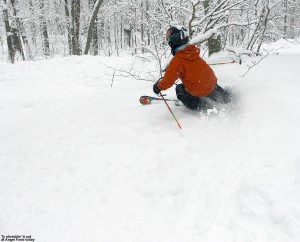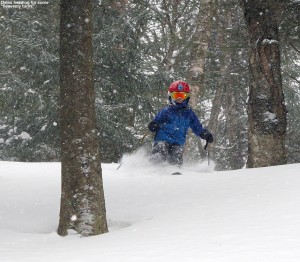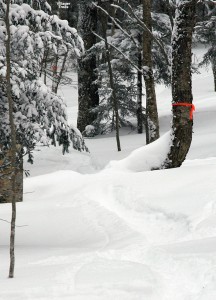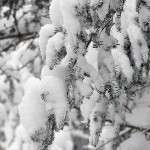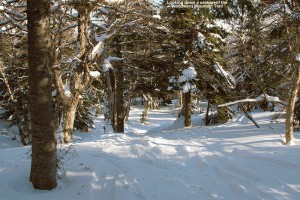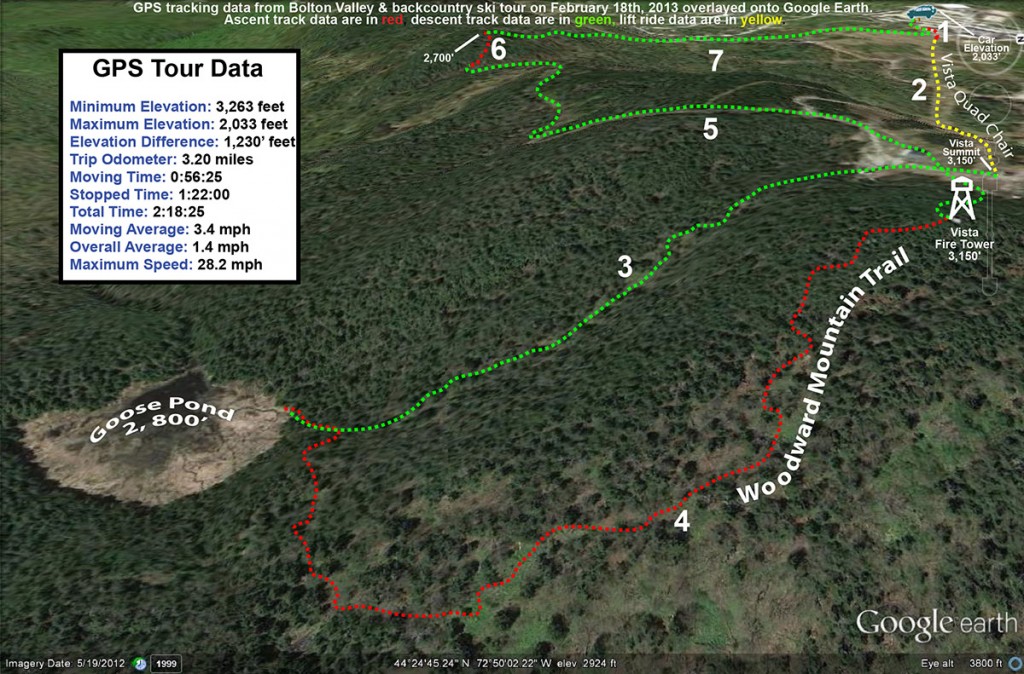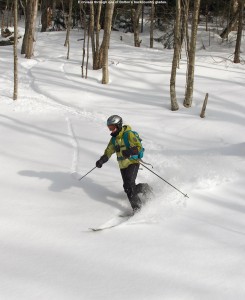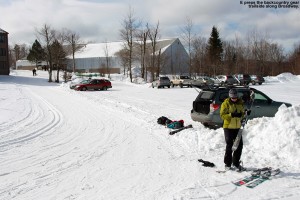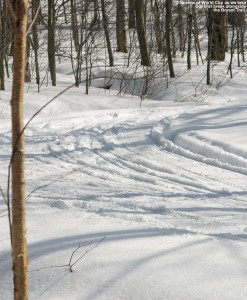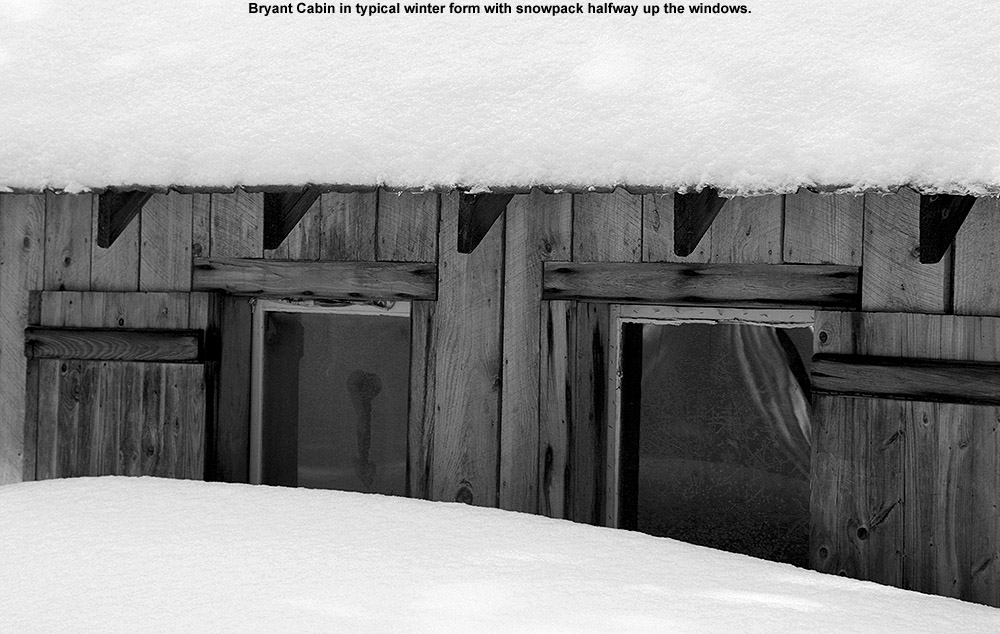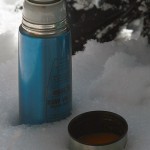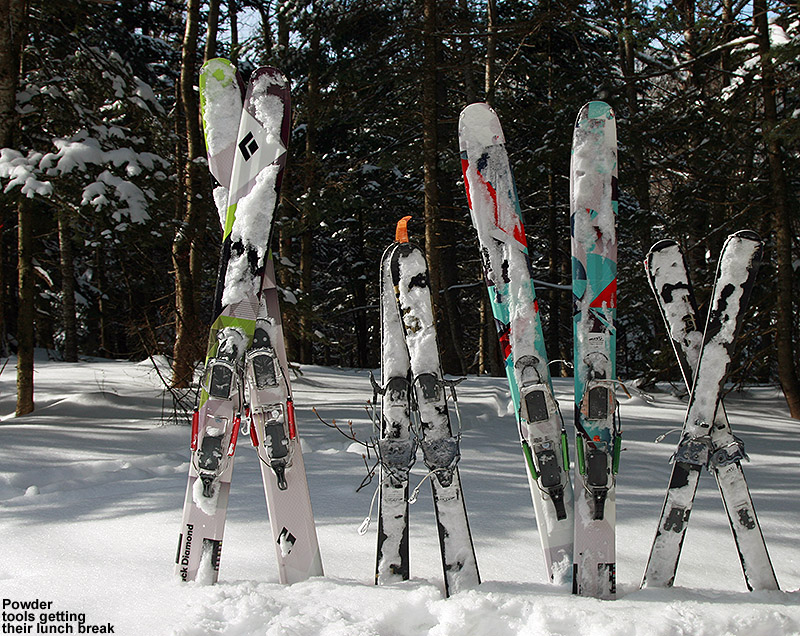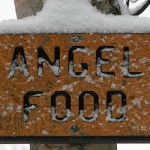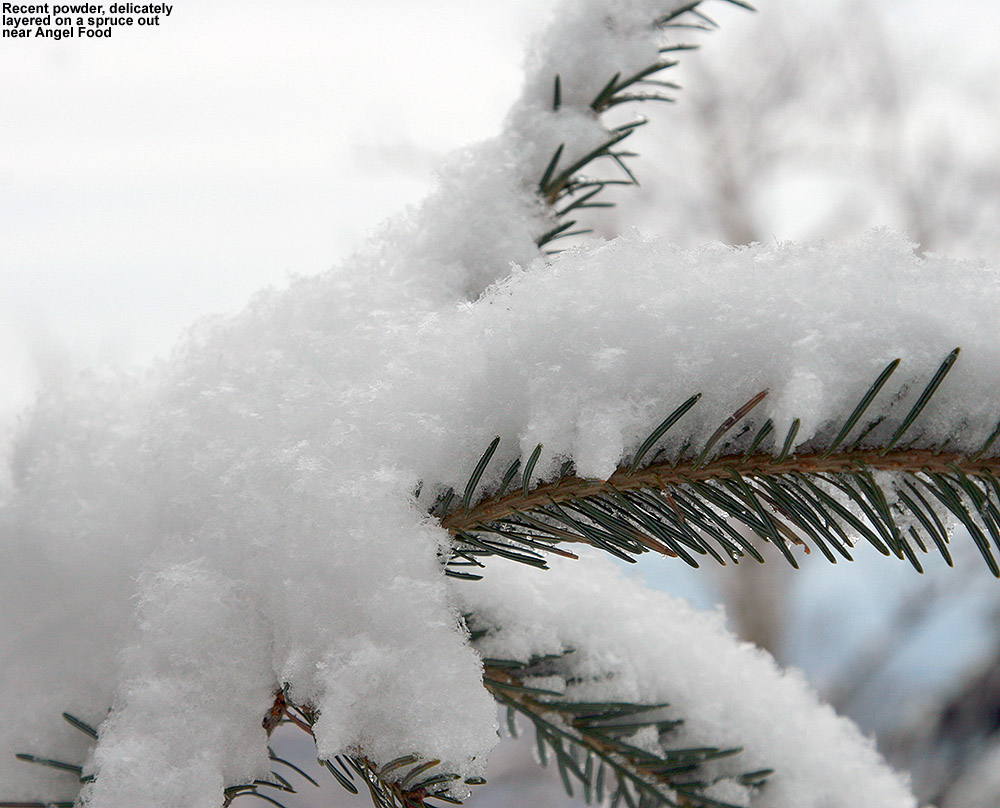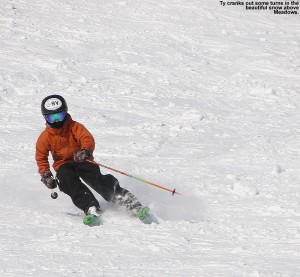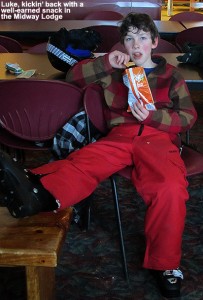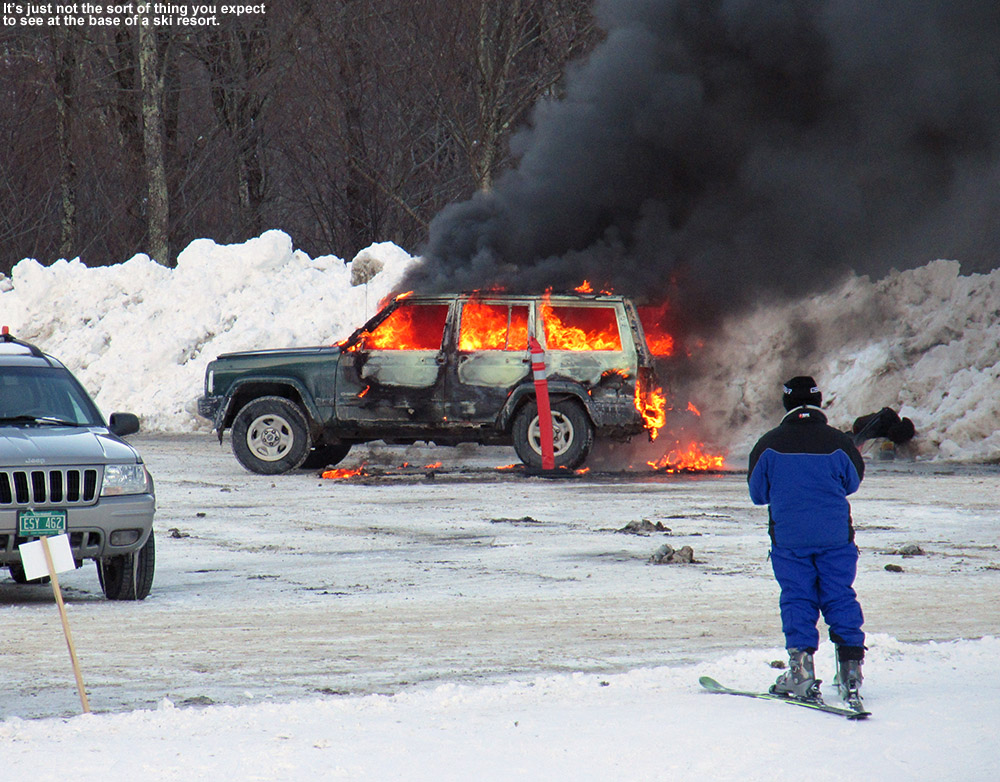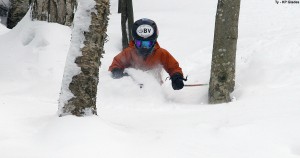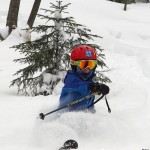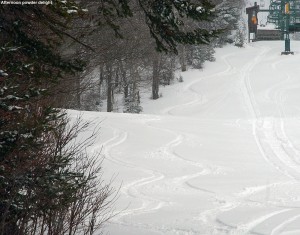
Our most recent storm brought up to 18 inches of snow to the Green Mountains, and while it was certainly much denser than Champlain Powder™, it provided a solid resurfacing to most areas. Based on the conditions we’ve had in the Northern Greens, it was hardly necessary, but a slope refresher is usually good, and this stuff is going to keep that mountain snowpack growing. I was busy in the morning, but with E and the boys still on break they came and picked me up in Burlington so that we could get in some skiing in the new snow. E and Ty had been tossing around the idea of working on a report that Ty had to do for school, and they ultimately decided that they had to use some of the afternoon to get a jump on that. So, it was just Dylan and I that initially headed up to Bolton Valley for some afternoon turns, while E and Ty planned to join us later if the work went smoothly.
In this area, snow has been falling all the way to the valley floors with the current storm cycle, but it’s still been fairly warm and the lowest elevations haven’t been accumulating snow except when temperatures drop overnight. Today it was fairly warm as well, with temperatures around 40 F or so at our house when we headed up to Timberline. We found that the snow there was already wet and spring-like, and I knew we’d be heading to the upper mountain to get to the best powder for turns. Indeed the snow was much better up high – at the Vista Summit above 3,000’ it was still somewhat dense, but dry and ready to support some good powder turns.
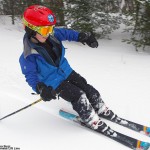 Being well into the afternoon, I decided to show Dylan some terrain off Ricker Mountain; we’d explored it before, but I doubt he’d remember that. The snow did get somewhat thick as we headed down in elevation, even just down to 2,800’. Dylan didn’t seem to have a problem, but if I stopped for extended periods I’d have snow starting to stick to the bottom of my skis. Fortunately, it would be cleaned off as soon as I started moving. We continued our run by making our way over to Wilderness, and that’s where we found some of our best powder of the day. Although we were lower in elevation than we’d been before, the snow Wilderness Lift Line was holding up quite well.
Being well into the afternoon, I decided to show Dylan some terrain off Ricker Mountain; we’d explored it before, but I doubt he’d remember that. The snow did get somewhat thick as we headed down in elevation, even just down to 2,800’. Dylan didn’t seem to have a problem, but if I stopped for extended periods I’d have snow starting to stick to the bottom of my skis. Fortunately, it would be cleaned off as soon as I started moving. We continued our run by making our way over to Wilderness, and that’s where we found some of our best powder of the day. Although we were lower in elevation than we’d been before, the snow Wilderness Lift Line was holding up quite well.
Our next run was a trip to the Villager Trees, and I gave Dylan his choice of line – he wanted the “Heaven” chute that he’d enjoyed the other day, so Dylan got first tracks through there. His run wasn’t without some adventure though – at one point he caught an edge and went flying head over heels. He was OK, but it took him a couple of minutes to realize that. Dylan wanted to catch a run on Adam’s Solitude, but once we got down to the lowest Timberline elevations and saw how sticky the snow was getting, I decided that we could hold off and catch it another time.
While we were in the lodge getting a snack for Dylan, I saw that I had a new phone message. It was from E, and she said that they had finished Ty’s work and were thinking of coming up for some night skiing. She also recalled that because it was Family Week at the resort, they had No Strings Marionette Company putting on a show up at the main lodge. We all planned to meet up, watch the show, and then get in some evening skiing under the lights.
The marionette show was excellent as expected – No Strings Marionette Company had spent a week in residence at Ty and Dylan’s school, so we knew their work. Ty had brought his Telemark skis and Dylan switched over to his, so they spent the evening working on their Telemark turns. After a couple runs, we snuck in dinner at Fireside Flatbread, and I was really surprised that the boys hadn’t had enough skiing after that. There was some really nice snow out there though, with the very best of it in the highest elevations. Dylan and I had noticed that the line of transition to notably wetter snow was about 200’ above the main base. The snow below that level was still OK, especially with skier traffic, but it was above that level that the new snow was driest and skiing really well. We started out with a typical training run on the Sherman’s Pass route, but Ty was eyeballing the impressively steep expanse of Spillway as we went by. I commented that Spillway was too steep for him to be working on Telemark turns, but of course Ty would have none of that logic. I acquiesced with the insistence that Ty practice Telemark turns even on the steep terrain, and by the next run we were dropping our way down the steeps of Spillway. The snow was somewhat packed in the center of the trail, and even starting to develop a few moguls. However, the sides, especially the skier’s right where the terrain is somewhat invisible as it falls away from view, held a lot of deep loose snow that was either still sitting there from the storm or thrown their by the work of other skiers. That terrain falling away from view also equates to it falling away from the assistance of the night skiing lights, and that adds quite a different dimension to the experience. With only the marginal assistance of the lights from the other side of the trail, it was quite a hoot making steep Telemark turns in down Spillway amidst copious chopped up powder. I found some beautifully soft lines of there, and it was a reminder of how even semi-packed snow can be a lot of fun. The boys were clearly having enough fun as well, because they wanted to keep doing more runs – we kept going until the lifts shut down.



























